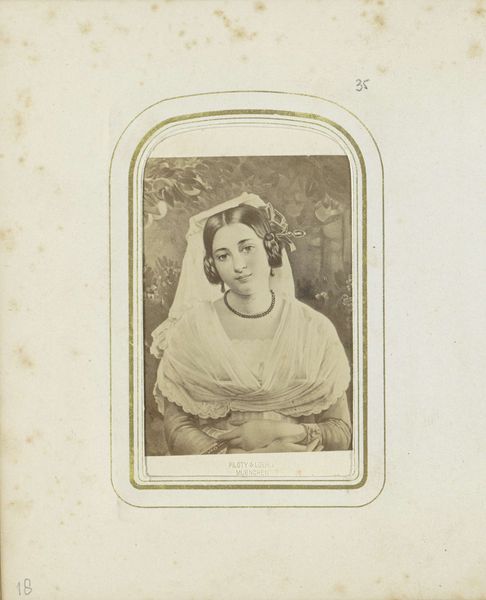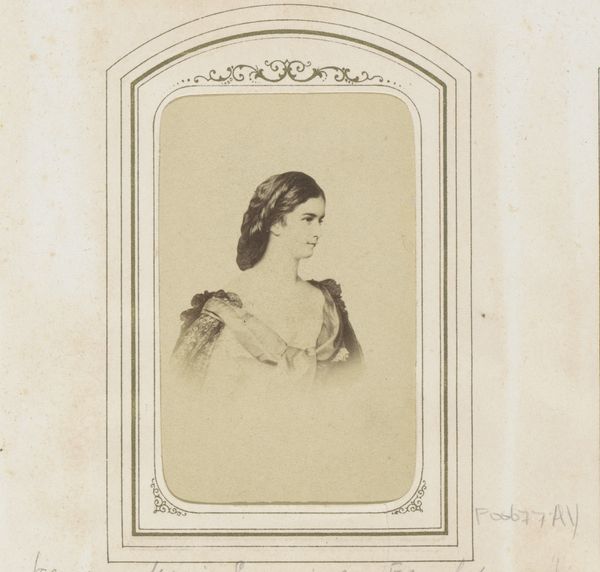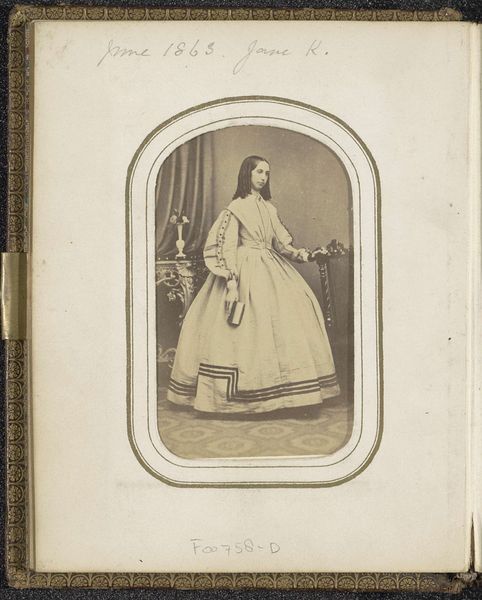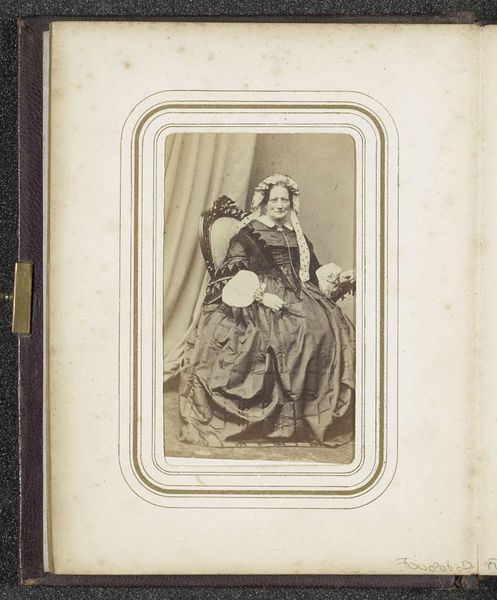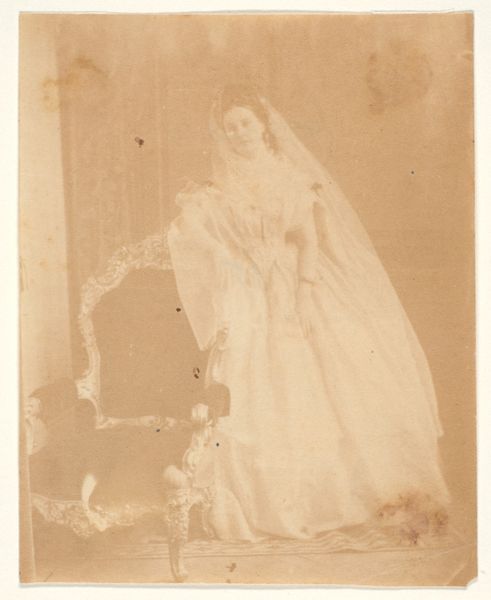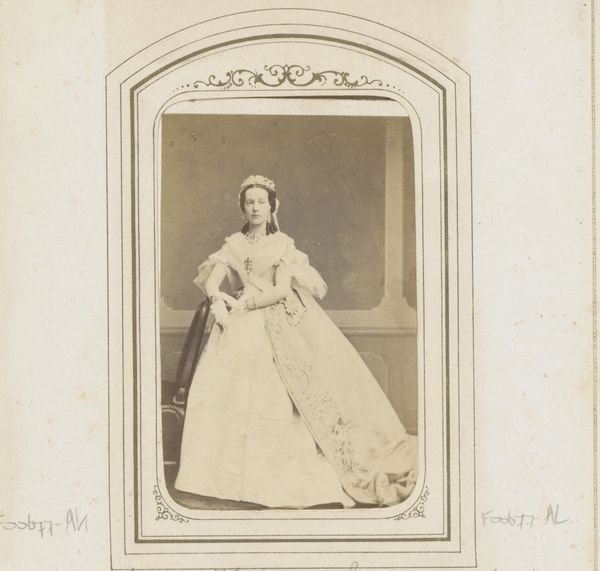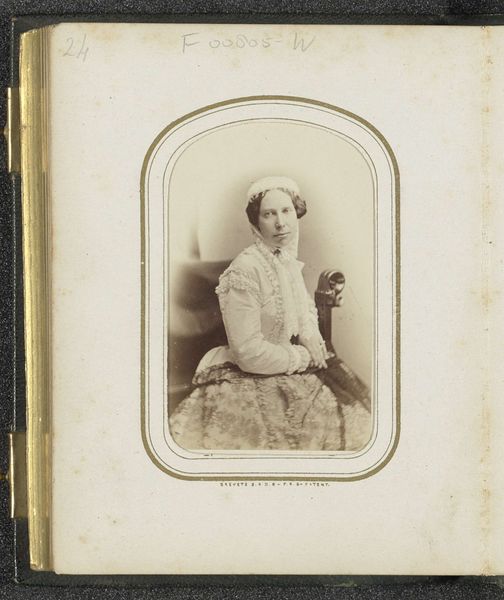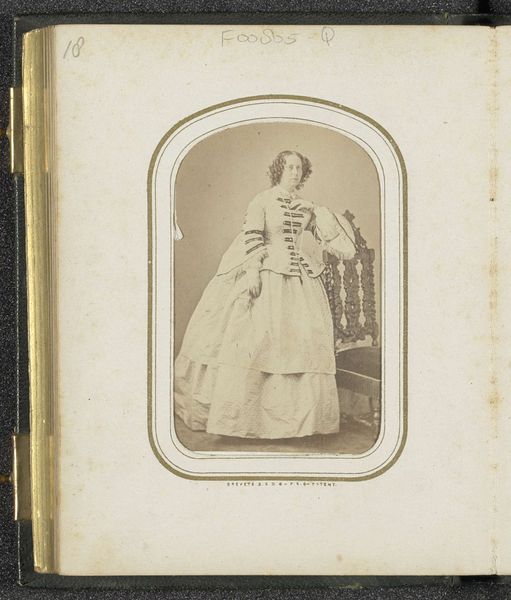
Fotoreproductie van een lithografie naar een schilderij van August Riedel c. 1865
0:00
0:00
lithograph, print, photography
#
portrait
#
lithograph
# print
#
photography
#
genre-painting
#
realism
Dimensions: height 85 mm, width 50 mm
Copyright: Rijks Museum: Open Domain
Curator: This is a photo reproduction of a lithograph based on a painting by August Riedel, dating back to about 1865. Editor: It's a striking portrait. She has an arresting gaze, and the overall tone is one of solemn dignity. Almost a classical serenity, but rendered through a modern, reproducible medium. Curator: Indeed. Riedel's original likely idealized a particular type, tapping into the 19th century fascination with genre paintings that romanticized the lives of everyday people. But let’s remember this isn't just the painting but a reproduction. It introduces questions about accessibility and the democratisation of images. The layers of reproduction through lithography and photography themselves add to this. Editor: Right. The photograph flattens the textures further, creating a slight distancing effect. Looking at it, I immediately think of the socio-political implications of how this image may have been received at the time. What did it mean to consume a photographic reproduction, potentially in a book, of an "ethnic type" depicted with an air of sentimental nobility? Curator: It raises interesting questions around issues of representation, doesn’t it? Who is controlling the narrative, and what is their intention? Was it to romanticise a "folk" culture, or was it something else? I wonder, does her expression imply something deeper, perhaps a quiet resistance to being othered and displayed in this manner? We must be careful not to flatten the individual identity when looking through a modern lens. Editor: Exactly, the risk of romanticising must be resisted. But thinking about its cultural impact at the time of creation, who got to see it, how much did it cost to acquire it and who made money from this imagery? These sorts of social elements shaped taste as much as artistic talent. Curator: It reminds us that even images seemingly innocent can reveal larger societal power structures. This piece, so simple in its presentation, becomes a powerful entry point into discussing complex histories. Editor: It becomes clear once we explore the reproduction methods and intended audience, yes. The lithograph becomes a political document. Curator: Absolutely, food for thought, indeed.
Comments
No comments
Be the first to comment and join the conversation on the ultimate creative platform.
